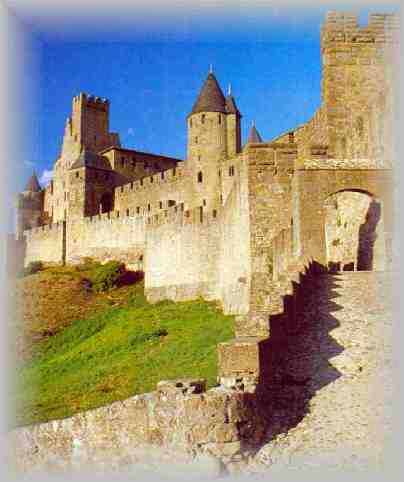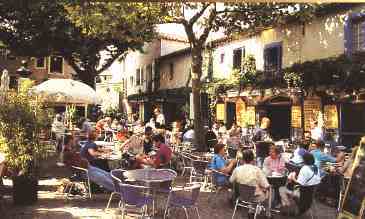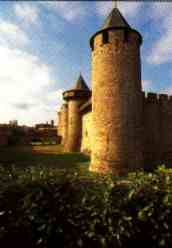"Le Domaine de
l'Espitalet" ![]()

Carcassonne and the Canal du Midi
two sites classified by "UNESCO World Heritage"
|
Carcassonne, actual capital of the Aude department, was the most powerful medieval fortress in the South.
Today, it represents an outstanding example of a medieval fortified town, one of Europe's completest examples. |
 |
The legend of Dame Carcas Once upon a time Carcassonne was under siege by Charlemagne's troops and the inhabitants had no more provisions. Dame Carcas decided to stuff the last sow with the last left wheat. Then she dropped the sow down on the besiegers, who were very astonished to see the sacrificed beast full of wheat as they expected the inhabitants of Carcassonne starving. Discouraged, the troops raised the siege. Dame Carcas made the horns blow to announce her victory. "Carcas sonne", shouted the inhabitants of Carcassonne in the enthusiasm of this victory. |
|
Restored
between 1852 et 1879 by Viollet-le-Duc, the "Cieutat" was
added in 1997 to the UNESCO
World Heritage List.
|
||
 |
The place Marcou in the medieval City. |
You should not only visit the fortified medieval city but also the old "Bastide" on the left bank of the Aude river. You can reach it through the "pont Vieux". This part of the town was created by the King Louis the Saint. It was one of these "bastides" which were built on the remote corners of the kingdom. During the 17th century it became the urban center of Carcassonne, mainly because of the opening of the Canal du Midi. |
|
In the old town you should visit the Montmorency House (125, rue Trivalle) with sculpted Renaissance wooden panes, the house of the Senéchal (70, rue Aimé Ramond) and its 14th century front, the Place Carnot and its Neptune fountain from Barata, the portal of the Jacobins in the fortifications from the 14th century, the St. Michael cathedral in gothic style from the Languedoc and the Rue Voltaire. |
 |
In the medieval fortress you should visit the Saint-Nazaire basilica (11th to 14th century), the tombstone of Simon de Montfort and one of the oldest organs in the South of France, the rest of the old fortification from the 4th century and the castle of the count of Carcassonne from the 12th century. |
| The Canal de la Robine links Narbonne to the Canal du Midi |
The Canal du Midi is a 360 kilometer long network of navigable waterways linking the Mediterranean Sea to the Atlantic through 328 structures like locks, aqueducts, bridges, tunnels... It is one of the most remarkable civil engineering feats of modern times. Built between 1667 and 1694, it opened the way for the Industrial Revolution. The care that its creator, Pierre-Paul Riquet, took in its design and the harmony with its surroundings turned a technical achievement into a work of art. It was added in 1996 by the UNESCO to the list of World Heritage. |
|
|
Today, the Canal du Midi is given back to nature and to those who love it. You can follow its way through the Languedoc by boat or cruiser. You can also walk or cycle on its shadowed banks to discover a strange universe seemingly out of time and out of world, but also intimately merged with its environment. |